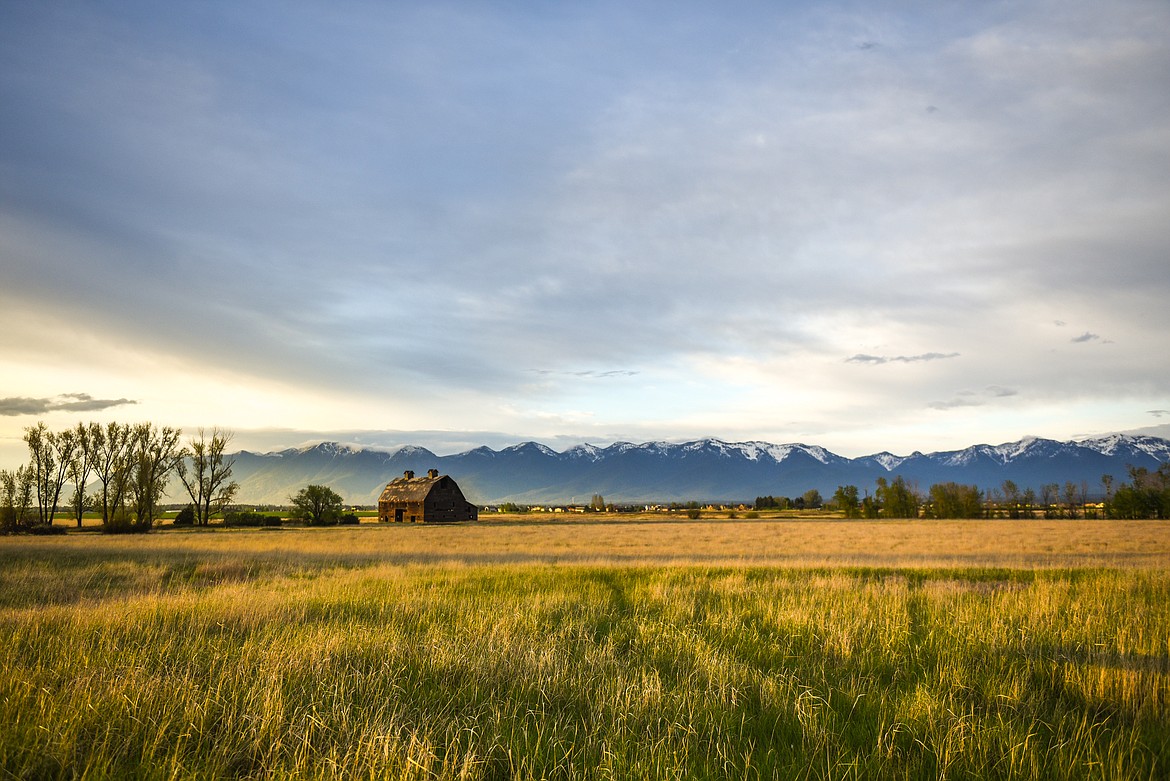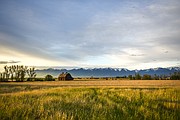An uncertain future for the iconic Blasdel barn
There are very few structures still standing today that give nod to the Flathead Valley’s rich farming history. And throughout the decades, as society and developments have inched farther into what was once solely farmland, the protection of these iconic mainstays has become paramount to many.
One such piece is the Porter Ranch Barn, which sits nestled on the Blasdel Waterfowl Production Area in Somers, where it has for more than a century. The towering farm fixture, constructed by wealthy settler Frank Porter, is impossible to miss when cruising the scenic highway corridor between Bigfork and Somers.
Several people still consider the barn, which was added to the National Register of Historic Places, to be the largest in the Flathead Valley. It was such a design and construction marvel back in the day that the Lower Valley threw a party upon its completion, according to Daily Inter Lake archives.
“Whenever there was a thunderstorm all of the cattle would head for the barn. We probably had between 80 to 100 head of cattle in there at a time and there would still be room. We used to joke you could fit everyone else’s barns into our barn,” said Don Blasdel, whose parents, Jesse and Ethel Blasdel, sold the property, barn and other structures that have since been torn down, to the Creston Fish and Wildlife Service in 1987.
Although the structure, commonly referred to as the “Blasdel Barn,” is now weathered and much of its paint has faded from its exterior, it’s not hard for passersby to imagine how grandiose the barn must have looked in its prime. But even in its deteriorating state, the antique is an artist’s muse and continues to be the subject of countless photographs and paintings.
And while there is much to admire about the structure and its history, it has become increasingly difficult for U.S. Fish and Wildlife Service officials to ignore its dilapidated state, which according to Wildlife Refuge Manager Kevin Shinn, is becoming more of a liability year after year.
“There have been more and more people trespassing onto the property and vandalizing it and although we have it closed off to the public, it seems like it’s only a matter of time until someone really gets hurt,” Shinn said.
According to Shinn, around 2010 the agency had started discussions with various interested parties on how the barn could be either restored or moved off the property and was pursuing a comprehensive conservation plan. Those efforts were eventually put on hold after the agency’s efforts and resources were diverted elsewhere.
But Shinn said he’s hoping 2020 will be the year he and others revisit what the barn’s future could look like and he has solicited input on the matter from the Montana State Historic Preservation Office, Montana Preservation Alliance, the Flathead Valley community and other stakeholders.
An initial brainstorming session was originally scheduled for mid-April, but due to issues surrounding the coronavirus, the meeting has been postponed to late summer. There is no official date for the meeting yet, but Shinn said the service is aiming for August.
“No one wants to see this barn lost. But the reality is we have liability issues with safety and more decay is occurring and the service doesn’t have the funding to restore it,” Shinn said. “We’ve asked other people to essentially come to the table and offer their ideas.”
Shinn said a few years ago the service had engineers and historians evaluate what it would cost to restore the barn. The estimate - which is most likely higher now - came in around $900,000.
“That just isn’t something the service can afford,” Shinn said. “We may be able to cover a portion of that, but not the whole amount, so we need to find some other funding outlet if that’s what we ultimately decide to do.”
WHILE THE Fish and Wildlife Service has finally gotten around to resurfacing its salvage plans, the community’s fight to keep Blasdel Barn standing is one that far predates any of the agency’s efforts.
According to Somers resident Francis Van Rinsum, the community really got involved in the late 1990s and early 2000s when service officials first broached the topic of burning or tearing it down. It was Van Rinsum, a former fire chief of the Somers/Lakeside Fire Department, who spearheaded a petition to stop it from being demolished.
“The sympathy of the community really got behind this,” Van Rinsum said. “I wrote the petition myself and things really got going. There were lots of public meetings on the issue and the end result was the service decided to bulldoze everything but the barn.”
Van Rinsum said aside from protecting the barn itself, the community more so wanted to protect what the barn symbolizes. He said it is a reminder that farming once dominated the area and that all the Flathead Valley is today, is a product of those humble roots.
“It’s my observation that farms are being sold right and left in this valley and that way of life is being lost as Kalispell and other cities grow,” Van Rinsum said. “It’s a historical monument and I just don’t know why anyone would want to get rid of it.”
Van Rinsum said he imagines the community would rally to save the Blasdel Barn again should the service reach the conclusion that it needs to be torn down. He said the community should value keeping it around so “future generations can appreciate it too.”
And there is perhaps no family that pertains more to than the Blasdels themselves.
Karen Baker, daughter of Don Blasdel, said she and her siblings and plenty of others grew up in and around it, swinging from its rafters and ice skating on the nearby pond. She said there used to be wild asparagus around the barn they would pick and eat raw.
“We were all sad when grandma and grandpa decided to sell it way back when and we will all be devastated if it goes,” Baker said. “If it is torn down, we will at least still have all of the memories we made out there.”
Don Blasdel is now 86 and still lives in the valley.
He said some of his fondest memories growing up involve the barn where he raised chickens and livestock, and would help his father load hay into the building’s second story. He said it’s where his character was built.
“We still take a trip or two out there every year,” Blasdel said. “We take our family pictures right out there in front of the barn.”
When asked where future family photos would be taken if the barn is no longer available as a backdrop, he paused and replied, “I’m just not sure.”
Reporter Kianna Gardner can be reached at 758-4407 or kgardner@dailyinterlake.com



